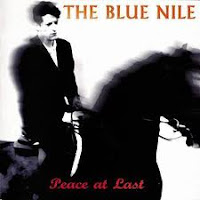 I'm going to close this very eclectic listening month with a report on the music of Aaron Copland that I've been surveying the last two, three weeks. How did I get to Copland? After having encountered the Jongen Symphonie Concertante I looked up some other orchestra and organ works and came across Copland's which was not in my collection but which came in soon enough via the Bernstein Sony box. So I listened to that, and I added Billy The Kid (which was also unfamiliar to me) in the Mata/Dallas SO recording. Went on to Rodeo and Appalachian Spring, both from a Telarc CD with Louis Lane conducting the Atlanta SO. I compared Lane's Spring with Bernstein's on a digital DGG recording with the Los Angeles SO. Another Telarc disc (Levi, also with the Atlanta SO) includes Copland's Music for the Theatre. More recently I reacquainted myself with his Third Symphony in the much lauded Bernstein 1986 recording with Quiet City as a filler.
I'm going to close this very eclectic listening month with a report on the music of Aaron Copland that I've been surveying the last two, three weeks. How did I get to Copland? After having encountered the Jongen Symphonie Concertante I looked up some other orchestra and organ works and came across Copland's which was not in my collection but which came in soon enough via the Bernstein Sony box. So I listened to that, and I added Billy The Kid (which was also unfamiliar to me) in the Mata/Dallas SO recording. Went on to Rodeo and Appalachian Spring, both from a Telarc CD with Louis Lane conducting the Atlanta SO. I compared Lane's Spring with Bernstein's on a digital DGG recording with the Los Angeles SO. Another Telarc disc (Levi, also with the Atlanta SO) includes Copland's Music for the Theatre. More recently I reacquainted myself with his Third Symphony in the much lauded Bernstein 1986 recording with Quiet City as a filler.I learned from all this that Copland is not my favourite composer. The only recording I really appreciated was Louis Lane's rendering of the Fanfare, Rodeo and Appalachian Spring. That is a truly memorable disc as Lane (for many years Szell's assistant at the Cleveland) captures the spirit of these works so admirably well. He plays them with the right mixture of grandeur and unfussyness, avoiding Bernstein's larmoyant take on this composer. In the latter's case, the Americana tilt into the sentimental and become really unpalatable. Lane's Fanfare for the Common Man is the only one I have heard that makes sense as a piece of jubilation. His Rodeo has a quietly granitic quality that really speaks to me. His Appalachian Spring, without any doubt Copland's greatest score, exhibits the clarity of line and purpose we find in Shaker furniture and utensils.
I was much less impressed by the other things I heard. Billy The Kid struck me as episodic and not as inspired as Rodeo. Music for the Theatre is a genuinely fun piece, mixing jazzy locutions with the composer's trademark idyllic rusticity. The Symphony for Organ, Copland's first substantial piece composed for his teacher Nadia Boulanger, is a very odd and strained affair with a sullen first movement and an incongruent scherzo that already looks ahead at the Wild West ballets. The Symphony nr. 3 finally, allegedly the composer's magnum opus, lacks a convincing symphonic superstructure. All the individual movements are nice enough to listen to but the whole doesn't gel. Bernstein, in his late recording, tries maybe to spin a little too much yarn from Copland's wool. Some say Antal Dorati's reading with the Minneapolis SO is the one to have, but it has sadly never appeared on CD.
Maybe I'm giving Copland short shrift here and do I need to have more patience. Or perhaps I just haven't been in the mood, immersed as I've been in French repertoire. I'm set to revisit this composer sooner or later.
















